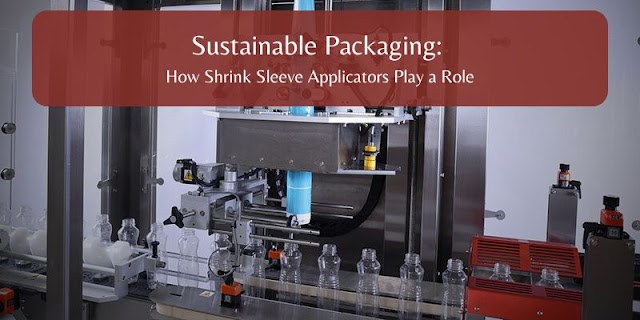As businesses face increasing pressure to reduce their environmental impact, packaging has become a focal point for innovation. Consumers are more conscious than ever about how products are wrapped, sealed, and labeled — and companies that invest in greener solutions not only appeal to eco-minded buyers but also save on costs over time. One of the unsung heroes in this shift is the Shrink Sleeve Applicator Machine, which plays a surprisingly important role in promoting sustainable packaging practices.
At first glance, it might seem counterintuitive — after all, the process involves using plastic films to create labels that wrap around containers. But when you dig deeper, it’s clear why this method is gaining popularity among brands that prioritize sustainability. For starters, these systems allow manufacturers to use thinner, lighter materials without compromising the durability or appearance of the packaging. A thinner label means less raw material, translating directly to reduced waste.
Another advantage is the 360-degree branding area that this technique provides. Traditional labeling often requires multiple pieces — a front label, back label, and sometimes a tamper-evident seal. By consolidating all branding and information onto one sleeve, companies reduce the number of materials and adhesives used. This streamlining results in fewer resources consumed during production and simpler recycling once the product reaches its end of life.
Energy efficiency is another area where these systems make a difference. Modern units are designed to operate with optimized heat levels and minimal energy waste. As the film wraps tightly around a container, the heat tunnels or steam systems are calibrated to use just enough power to achieve a secure seal. Upgrading to an advanced Shrink Sleeve Applicator helps packaging facilities reduce their carbon footprint by lowering energy consumption during each run.
It’s worth mentioning material innovation. Many companies now choose eco-friendly films, including biodegradable or recyclable options, which work seamlessly with modern applicators. These films are often made from polymers that break down more easily or can be reprocessed into new products, giving brands the flexibility to align with global recycling goals. With sustainability certifications becoming a selling point for consumers, using greener films and efficient systems is a win-win.
Another key benefit is the ability to right-size packaging. One major waste factor in the industry is unnecessary excess material. Because these machines apply sleeves that conform exactly to the shape of each container, there’s no wasted space or need for oversized labels. This precise fit reduces the volume of materials used per unit, which adds up significantly when producing thousands or millions of items.
The conversation should shift to how these systems contribute to supply chain efficiency. With greater consistency in labeling and packaging, products are less likely to be rejected due to defects or misalignment, which minimizes wasted batches. Better labeling accuracy also means less rework, saving time, energy, and resources throughout the manufacturing process. For companies scaling production while trying to stay green, this reliability is invaluable.
It’s not just about production, either. Retailers appreciate the tamper-evident security these labels provide. A single piece that seals the product reduces the need for additional plastic wrappers or seals. This layered benefit of combining safety and sustainability makes this packaging method a preferred choice for food, beverage, and personal care brands.
Businesses also benefit from the flexibility these systems offer. They can handle containers of varying shapes and sizes without the need for separate lines or extra tooling. This versatility means less equipment overall, which reduces the manufacturing footprint in the long run. Plus, when a brand updates its design, the changeover process is quick and generates less waste than traditional labeling methods.
Of course, none of these sustainability benefits would be possible without regular maintenance and smart operation. A well-calibrated system not only prevents downtime but also ensures that energy use stays low and films are applied with minimal waste. Many manufacturers now invest in operator training and regular tune-ups to get the most eco-friendly performance from their equipment.
Consumers, too, are part of this cycle. When labels are designed with clear recycling instructions, it becomes easier for end users to separate components and dispose of them correctly. Forward-thinking brands even use inks and adhesives that don’t contaminate the recycling stream, maximizing the sustainability of the entire process from start to finish.
In conclusion, investing in a modern Shrink Sleeve Applicator Machine is more than just a move toward better branding — it’s a smart step toward greener packaging operations. By using thinner films, reducing energy consumption, improving supply chain efficiency, and supporting recyclable materials, this technology empowers companies to meet sustainability goals without sacrificing product appeal. As industries continue to look for ways to reduce their environmental impact, this powerful equipment will remain at the heart of innovative, eco-friendly packaging strategies.






0 Comments